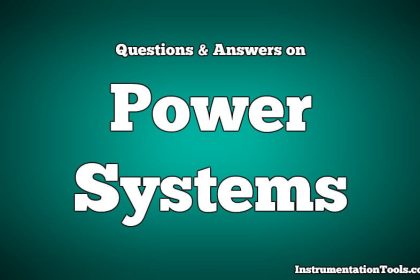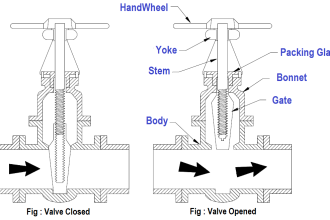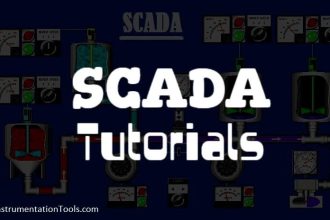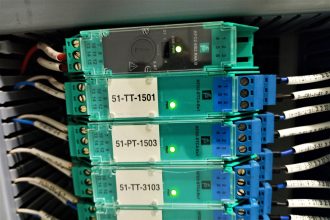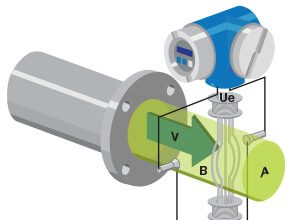Understand the different types of relays through our detailed questions and answers for electrical and electronics engineering students.
Types of Relays
The electrical video below provides detailed explanations for the relay questions.
Question 1
What is an SPST relay?
A. A relay with two poles and single throw
B. A relay with a single pole and single throw
C. A relay with four poles and double throws
D. A relay with three poles and two throws
Show the Answer
A relay with a single pole and single throw
Question 2
What is an SPDT relay?
A. A relay with two poles and two throws
B. A relay with one pole and two throws
C. A relay with one pole and one throw
D. A relay with three poles and three throws
Show the Answer
A relay with one pole and two throws
Question 3
What is a DPST relay?
A. A relay with four poles and single throw
B. A relay with two poles and two throws
C. A relay with three poles and two throws
D. A relay with two poles and single throw
Show the Answer
A relay with two poles and single throw
Question 4
What is a DPDT relay?
A. A relay with two poles and double throws
B. A relay with three poles and triple throws
C. A relay with one pole and double throws
D. A relay with two poles and single throw
Show the Answer
A relay with two poles and double throws
Question 5
What is a TPST relay?
A. A relay with four poles and single throw
B. A relay with three poles and single throw
C. A relay with three poles and two throws
D. A relay with two poles and single throw
Show the Answer
A relay with three poles and single throw
Question 6
What is a TPDT relay?
A. A relay with four poles and triple throws
B. A relay with three poles and three throws
C. A relay with three poles and double throws
D. A relay with three poles and single throw
Show the Answer
A relay with three poles and double throws
Question 7
What is a 4PST relay?
A. A relay with four poles and triple throws
B. A relay with two poles and single throw
C. A relay with four poles and single throw
D. A relay with four poles and double throws
Show the Answer
A relay with four poles and single throw
Question 8
What is a 4PDT relay?
A. A relay with four poles and single throw
B. A relay with four poles and double throws
C. A relay with three poles and double throws
D. A relay with four poles and triple throws
Show the Answer
A relay with four poles and double throws
Question 9
What are Electromechanical Relays?
A. Relays using mechanical movement to open/close contacts
B. Relays with semiconductor components
C. Relays with no moving parts
D. Relays that use pneumatic control
Show the Answer
Relays using mechanical movement to open/close contacts
Question 10
What are Solid State Relays (SSR)?
A. Relays with mechanically operated switches
B. Relays using semiconductors for switching
C. Relays using thermal actuators
D. Relays with mercury-wetted contacts
Show the Answer
Relays using semiconductors for switching
Question 11
What are Reed Relays?
A. Relays with hermetically sealed contacts actuated by a magnetic field
B. Relays sensitive to voltage changes
C. Relays with heavy-duty contacts
D. Relays using pneumatic controls
Show the Answer
Relays with hermetically sealed contacts actuated by a magnetic field
Question 12
What are Hybrid Relays?
A. Relays combining mechanical and solid-state components
B. Relays with thermal bimetallic strips
C. Relays with only mechanical parts
D. Relays that use vacuum tubes
Show the Answer
Relays combining mechanical and solid-state components
Question 13
What are Thermal Relays?
A. Relays that respond to temperature changes
B. Relays with vacuum-sealed contacts
C. Relays that use semiconductors
D. Relays operated by magnetic fields
Show the Answer
Relays that respond to temperature changes
Question 14
What are Mercury Wetted Relays?
A. Relays with solid-state components
B. Relays with bimetallic strips
C. Relays with mercury-wetted contacts for low resistance
D. Relays operated by air pressure
Show the Answer
Relays with mercury-wetted contacts for low resistance
Question 15
What are Polarized Relays?
A. Relays that use a permanent magnet to maintain a set position
B. Relays sensitive to voltage changes
C. Relays with thermal actuators
D. Relays with no polarity sensitivity
Show the Answer
Relays that use a permanent magnet to maintain a set position
Question 16
What are Overcurrent Relays?
A. Relays sensitive to temperature
B. Relays that activate with excess current
C. Relays using time delay mechanisms
D. Relays with solid-state components
Show the Answer
Relays that activate with excess current
Question 17
What are Impedance Relays?
A. Relays that measure impedance to determine faults
B. Relays with mercury contacts
C. Relays sensitive to voltage changes
D. Relays with bimetallic strips
Show the Answer
Relays that measure impedance to determine faults
Question 18
What are Differential Relays?
A. Relays comparing two electrical quantities
B. Relays with mechanical contacts
C. Relays that operate based on frequency changes
D. Relays using thermal sensors
Show the Answer
Relays comparing two electrical quantities
Question 19
What are Distance Relays?
A. Relays measuring the distance to a fault
B. Relays with mechanical contacts
C. Relays that use thermal expansion
D. Relays operated by magnetic fields
Show the Answer
Relays measuring the distance to a fault
Question 20
What are Frequency Relays?
A. Relays sensitive to voltage
B. Relays that respond to frequency variations
C. Relays that measure current
D. Relays with thermal actuators
Show the Answer
Relays that respond to frequency variations
Question 21
What are Supervisory Relays?
A. Relays that monitor and control other relays
B. Relays with mechanical contacts
C. Relays with bimetallic strips
D. Relays using solid-state components
Show the Answer
Relays that monitor and control other relays
Question 22
What are Buchholz Relays?
A. Relays used in power lines
B. Relays measuring temperature changes
C. Relays with solid-state components
D. Gas-actuated relays for oil-filled transformers
Show the Answer
Gas-actuated relays for oil-filled transformers
Question 23
What are Time Delay Relays?
A. Relays with mechanical contacts
B. Relays with instantaneous operation
C. Relays sensitive to current changes
D. Relays that operate after a preset time delay
Show the Answer
Relays that operate after a preset time delay
Question 24
What is a Form A relay?
A. Relay with DPST contacts
B. Relay with SPST normally closed contact
C. Relay with DPDT contacts
D. Relay with SPST normally open contact
Show the Answer
Relay with SPST normally open contact
Question 25
What is a Form B relay?
A. Relay with DPST contacts
B. Relay with SPST normally open contact
C. Relay with DPDT contacts
D. Relay with SPST normally closed contact
Show the Answer
Relay with SPST normally closed contact
Question 26
What is a Form C relay?
A. Relay with SPDT contact
B. Relay with DPST contacts
C. Relay with SPST normally closed contact
D. Relay with SPST normally open contact
Show the Answer
Relay with SPDT contact
Question 27
What is a Form D relay?
A. Relay with SPDT normally closed contact
B. Relay with DPDT contacts
C. Relay with DPST normally open contacts
D. Relay with SPST normally closed contact
Show the Answer
Relay with SPDT normally closed contact
Question 28
What is a Form X relay?
A. Relay with SPST normally open contact
B. Relay with SPST normally open and normally closed contacts
C. Relay with SPST normally closed contact
D. Relay with DPDT contacts
Show the Answer
Relay with SPST normally open contact
Question 29
What is a Form Y relay?
A. Relay with SPST normally open and normally closed contacts
B. Relay with DPST normally open contacts
C. Relay with SPST normally open contact
D. Relay with SPST normally closed contact
Show the Answer
Relay with SPST normally open and normally closed contacts
Question 30
What is a Form Z relay?
A. Relay with DPST normally open contacts
B. Relay with SPDT normally open and normally closed contacts
C. Relay with DPST normally closed contacts
D. Relay with SPDT normally closed contact
Show the Answer
Relay with SPDT normally open and normally closed contacts
Question 31
What is a Form U relay?
A. Relay with DPST normally closed contacts
B. Relay with SPST normally closed contact
C. Relay with DPDT normally closed contacts
D. Relay with SPST normally open contact
Show the Answer
Relay with DPST normally closed contacts
Question 32
What is a Form K relay?
A. Relay with SPST normally open contact
B. Relay with SPDT normally open contact
C. Relay with SPST normally closed contact
D. Relay with DPDT contact configuration
Show the Answer
Relay with DPDT contact configuration
Question 33
What is a Form R relay?
A. Relay with DPST normally open contacts
B. Relay with SPDT normally open contact
C. Relay with SPDT normally closed contact
D. Relay with SPST normally open contact
Show the Answer
Relay with SPDT normally closed contact
Question 34
What is a Form S relay?
A. Relay with SPDT normally open contact
B. Relay with SPST normally open contact
C. Relay with DPST normally closed contacts
D. Relay with DPST normally open contacts
Show the Answer
Relay with DPST normally open contacts
Question 35
What is a Form W relay?
A. Relay with SPST normally open contact
B. Relay with DPDT contact configuration
C. Relay with SPDT normally closed contact
D. Relay with DPST normally open contacts
Show the Answer
Relay with DPDT contact configuration
Question 36
Which relay type is commonly used for simple on/off control applications?
A. SPST
B. TPST
C. SPDT
D. DPDT
Show the Answer
SPST
Question 37
Which relay configuration is best for switching between two power sources?
A. SPDT
B. SPST
C. DPST
D. 4PDT
Show the Answer
SPDT
Question 38
What type of relay is suitable for controlling three-phase motors?
A. DPDT
B. TPST
C. SPDT
D. SPST
Show the Answer
TPST
Question 39
Which relay is ideal for reversing the direction of a motor?
A. DPST
B. SPDT
C. SPST
D. DPDT
Show the Answer
DPDT
Question 40
For applications requiring the simultaneous disconnection of two circuits, which relay should be used?
A. 4PDT
B. DPST
C. SPST
D. SPDT
Show the Answer
DPST
Question 41
What relay type is used when a circuit needs to alternate between two outputs?
A. SPST
B. 4PST
C. DPST
D. SPDT
Show the Answer
SPDT
Question 42
Which relay configuration is used for complex switching operations requiring multiple circuits?
A. DPDT
B. 4PST
C. SPST
D. SPDT
Show the Answer
DPDT
Question 43
Which relay type can control four separate circuits simultaneously?
A. 4PST
B. SPDT
C. SPST
D. DPDT
Show the Answer
4PST
Question 44
What type of relay is used for applications requiring delayed operations?
A. Reed Relay
B. Thermal Relay
C. Time Delay Relay
D. Differential Relay
Show the Answer
Time Delay Relay
Question 45
Which relay type is best for switching high current loads with minimal contact wear?
A. Differential Relay
B. Buchholz Relay
C. Mercury Wetted Relay
D. Impedance Relay
Show the Answer
Mercury Wetted Relay
Question 46
What relay type is used to protect electrical equipment by comparing the current entering and leaving a protected zone?
A. Impedance Relay
B. Reed Relay
C. Thermal Relay
D. Differential Relay
Show the Answer
Differential Relay
Question 47
Which relay type is suitable for applications requiring memory functions?
A. Polarized Relay
B. Mechanical Relay
C. Differential Relay
D. Time Delay Relay
Show the Answer
Polarized Relay
Question 48
Which relay type is most suitable for applications requiring alternate control between two circuits?
A. SPDT
B. SPST
C. 4PST
D. DPST
Show the Answer
SPDT
Question 49
Which relay is ideal for industrial applications requiring high current switching?
A. DPDT
B. SPST
C. SSR
D. 4PDT
Show the Answer
SSR
Question 50
What type of relay is used to control all phases of a three-phase motor simultaneously?
A. SPDT
B. TPST
C. SPST
D. DPDT
Show the Answer
TPST
Read Next:
- PLC MCQ Questions and Answers
- Difference Between Contactor and Relay
- Switch Types and Common Terminology
- Power System Protection and Relays Questions
- Single Phase Preventer Relay Working Principle



